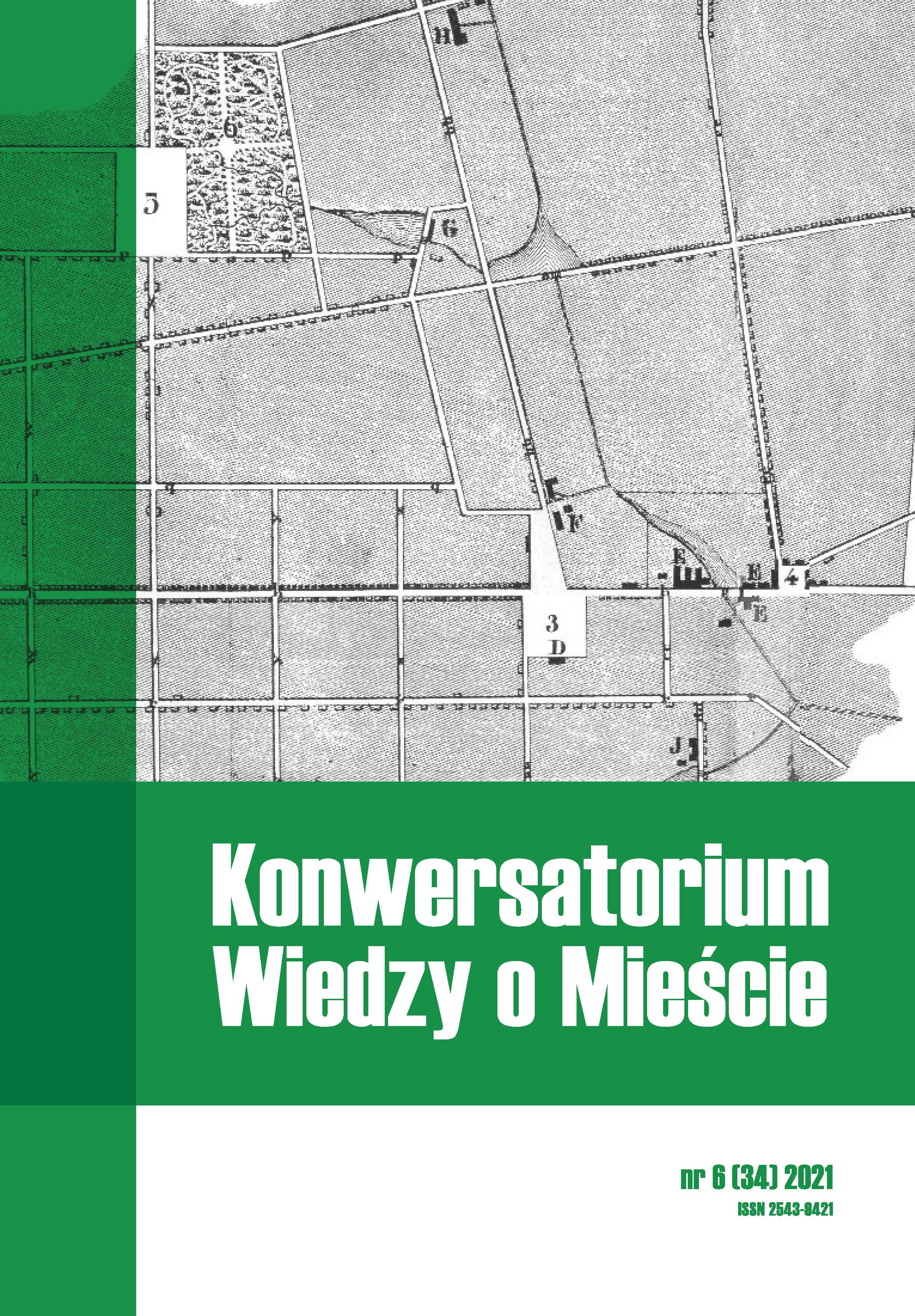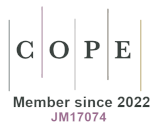A qualitative approach to the migration attractiveness of a city: Łódź in the opinions of new residents
DOI:
https://doi.org/10.18778/2543-9421.06.12Keywords:
migration attractiveness, reasons for migration, Łódź, living conditions, qualitative researchAbstract
From all previous research on migration patterns, it is clear that some places are more attractive to migrants than others. The relatively low migration attractiveness of Łódź, which exacerbates the city’s unfavourable demographic situation, has inspired questions concerning those people who decide to settle there and the main reasons for their decisions. The subject matter falls within the broader perspective of research on the migratory attractiveness of cities, but was approached in a qualitative manner. The empirical basis for the paper is a study conducted in 2016, the main aim of which was to determine the factors that attract people to Łódź, those that push them away from their previous places of residence, and to trace how new residents of the city evaluate it in terms of living conditions. The research was conducted using unstructured interviews with 32 respondents. The main reasons for settling in Łódź cover the most important institutional areas such as the labour market, education, health care and public services including culture and leisure; personal or family reasons, mainly the finding of a life partner in Łódź, or the desire to live close to relatives; and taking up higher education and staying in the city after graduation.
References
Bell, M., Muhidin, S. (2009). Cross-national comparison of internal migration. Human Development Research Paper, 30. Retrieved from: http://hdr.undp.org/en/content/cross-national-comparisons-internal-migration (10.11.2020).
Google Scholar
Besser, T.L., Recker, N., Parker, M. (2009). The impact of new employers from the outside, the growth of local capitalism, and new amenities on the social and economic welfare of small towns. Economic Development Quarterly, 23 (4), 306–316. https://doi.org/10.1177/0891242409340899
Google Scholar
DOI: https://doi.org/10.1177/0891242409340899
Boryczka, E., Sulikowski, T. (2008). Wizerunek miasta w oczach studentów łódzkich uczelni publicznych – podstawy teoretyczne. In: Z. Przygodzki, M.E. Sokołowicz (eds), Nowoczesne miasto. Badania, instrumenty, analizy (pp. 231–236). Łódź: Wydawnictwo Biblioteka.
Google Scholar
Brehm, J., Eisenhauer, B., Krannich, R. (2004). Dimensions of community attachment and their relationship to well‐being in the Amenity‐Rich Rural West. Rural Sociology, 69 (3), 405–429.
Google Scholar
DOI: https://doi.org/10.1526/0036011041730545
Bujwicka, A. (2011). Typy wielkomiejskiego sąsiedztwa. Wyobrażone a praktykowane stosunki sąsiedzkie mieszkańców Łodzi. Acta Universitatis Lodziensis. Folia Sociologica, 36, 101–119.
Google Scholar
Clark, T.N. (2004). The city as an entertainment machine. Oxford: Elsevier.
Google Scholar
Couch, C., Cocks, M., Bernt, M., Grossmann, K., Haase, A., Rink, D. (2012). Shrinking Cities in Europe. Town & Country Planning, 81 (6), 264–270.
Google Scholar
Czapiński, J., Panek, T. (red.) (2015). Diagnoza Społeczna 2015. Warunki i jakość życia Polaków. Warszawa: Rada Monitoringu Społecznego.
Google Scholar
Florida, R. (2002). The rise of the creative class. New York: Basic Books.
Google Scholar
Fotheringham, A.S., Champion, T., Wymer, C., Coombes, M. (2000). Measuring destination attractivity: A migration example. International Journal of Population Geography, 6 (6), 391–421. https://doi.org/10.1002/1099-1220(200011/12)6:6%3C391::AID-IJPG200%3E3.0.CO;2-5
Google Scholar
DOI: https://doi.org/10.1002/1099-1220(200011/12)6:6<391::AID-IJPG200>3.0.CO;2-5
Górny, A., Kaczmarczyk, P. (2003). Uwarunkowania i mechanizmy migracji zarobkowych w świetle wybranych koncepcji teoretycznych. Warszawa: Instytut Studiów Społecznych UW.
Google Scholar
GUS (2002). Bezrobotni oraz stopa bezrobocia wg województw, podregionów i powiatów – stan na grudzień. Retrieved from: https://stat.gov.pl (22.09.2021).
Google Scholar
GUS (2012). Bezrobotni oraz stopa bezrobocia wg województw, podregionów i powiatów – stan na grudzień. Retrieved from: https://stat.gov.pl (22.09.2021).
Google Scholar
Hooimeijer, P., van der Knaap, B. (1994). From flows of people to networks of behaviour. In: P. Hooimeijer, G.A. van der Knaap, J. van Weesep and R.I. Woods (eds), Population dynamics in Europe, current issues in population geography (pp. 177–185). Utrecht: Royal Netherlands Geographical Society and Department of Geography, University of Utrecht.
Google Scholar
Hugo, G.J. (1982). Circular migration in Indonesia. Population and Development Review, 8 (1), 59–83. https://doi.org/10.2307/1972690
Google Scholar
DOI: https://doi.org/10.2307/1972690
Jagielski, A. (1974). Geografia ludności. Warszawa: PWN.
Google Scholar
Józefowicz, K. (2020). Atrakcyjność migracyjna miast i obszarów wiejskich województwa wielkopolskiego. Space – Society – Economy, 31, 213–227. https://doi.org/10.18778/1733-3180.31.11
Google Scholar
DOI: https://doi.org/10.18778/1733-3180.31.11
Kałuża-Kopias, D. (2010). Migracje wewnętrzne w Łodzi na tle wybranych, największych miast w Polsce. Acta Universitatis Lodziensis. Folia Sociologica, 35, 199–217.
Google Scholar
Kałuża-Kopias, D. (2014). Atrakcyjność migracyjna wielkich miast – stan obecny i perspektywy. Problemy Polityki Społecznej. Studia i Dyskusje, 27 (4), 41–54.
Google Scholar
Kryńska, E. (2015). Znikanie miast. Studium przypadku Łodzi. Studia Ekonomiczne. Zeszyty Naukowe Uniwersytetu Ekonomicznego w Katowicach, 223, 174–185.
Google Scholar
Kupiszewski, M. (2002). Modelowanie dynamiki przemian ludności w warunkach wzrostu znaczenia migracji międzynarodowych. Warszawa: Polska Akademia Nauk, IGiPZ PAN.
Google Scholar
Kwiatek-Sołtys, A. (2006). Migration attractiveness of small towns in the Małopolska Province. Bulletin of Geography. Socio-economic Series, 5, 155–160.
Google Scholar
Landry, Ch., Bianchini, F. (1995). The creative city. London: Demos.
Google Scholar
Lee, E.S. (1966). A theory of migration. Demography, 3 (1), 47–57. https://doi.org/10.2307/3002931
Google Scholar
DOI: https://doi.org/10.2307/2060063
Limmer, R., Schneider, N.F. (2008). Studying Job-Related Spatial Mobility in Europe. In: N. Schneider, G. Meil (eds), Mobile living across Europe. Relevance and diversity of job-related spatial mobility in six European countries (pp. 13–45). Opladen: Barbara Budrich Publishers. https://doi.org/10.2307/j.ctvddzvz7.4
Google Scholar
DOI: https://doi.org/10.2307/j.ctvddzvz7.4
Liszewski, S. (2001). Ewolucja funkcjonalna Łodzi. In: S. Liszewski (ed.), Zarys monografii województwa łódzkiego (pp. 29–46). Łódź: Łódzkie Towarzystwo Naukowe.
Google Scholar
Liszewski, S., Szafrańska E., Wolaniuk A. (2008). Szkolnictwo wyższe Łodzi i jego rola w rozwoju funkcji metropolitalnej miasta. Łódź: Łódzkie Towarzystwo Naukowe.
Google Scholar
Łabędzki, H. (2009). Migracje ludności na obszarach przygranicznych południowo-zachodniej Polski, Biblioteka regionalisty, 9, 7–15.
Google Scholar
Łódzki Rower Publiczny (2018). Retrieved from: https://lodzkirowerpubliczny.pl/aktualnosci/ (4.01.2018).
Google Scholar
Majer, A. (1997). Duże miasta Ameryki. „Kryzys” i polityka odnowy. Łódź: Wydawnictwo Uniwersytetu Łódzkiego.
Google Scholar
Michalska-Żyła, A. (2009). Wizerunek miasta poprzemysłowego. Przykład Łodzi. In: M. Dymnicka, A. Majer (eds), Współczesne miasta. Szkice socjologiczne (128–146). Łódź: Wydawnictwo Uniwersytetu Łódzkiego.
Google Scholar
Michalska-Żyła, A. (2014). The quality of life and social capital in post-industrial peripheral cities. Przegląd Socjologiczny, 63 (1), 109–136.
Google Scholar
Pawłowska, K. (1996). Idea swojskości w urbanistyce i architekturze miejskiej. Seria: Architektura, Monografia, 203. Kraków: Politechnika Krakowska.
Google Scholar
Potrykowska, A., Śleszyński, P. (1999). Migracje wewnętrzne w Warszawie i województwie warszawskim. Warszawa: IGiPZ PAN.
Google Scholar
PWC (2011). Raporty na temat wielkich miast Polski. Retrieved from: https://www.pwc.pl (10.09.2020).
Google Scholar
PWC (2015). Raporty na temat wielkich miast Polski. Retrieved from: https://www.pwc.pl (10.09.2020).
Google Scholar
Rogers, A., Sweeney, S. (1998). Measuring the spatial focus of migration patterns. The Professional Geographer, 50 (2), 232–242. https://doi.org/10.1111/0033-0124.00117
Google Scholar
DOI: https://doi.org/10.1111/0033-0124.00117
Rosner, A. (2007). Zróżnicowanie poziomu rozwoju społeczno-gospodarczego obszarów wiejskich a zróżnicowanie dynamiki przemian. Warszawa: IRWiR PAN.
Google Scholar
Smętkowski, M. (2011). Polityka spójności a konkurencyjność dużych polskich miast. Studia Regionalne i Lokalne, wydanie specjalne, 31–56.
Google Scholar
Szukalski, P. (2012). Sytuacja demograficzna Łodzi. Łódź: Wydawnictwo Biblioteka.
Google Scholar
Śleszyński, P. (2020). Koncepcja nowego wskaźnika atrakcyjności migracyjnej i jego zastosowania. Czasopismo Geograficzne, 91 (1–2), 37–58.
Google Scholar
Šimpach, O., Dotlačilová, P. (2013). Analysis of migration attractiveness of the regions in the Czech Republic during 2007–2011. In: Proceedings of the International Scientific Conference: Region in the Development of Society 2013 (pp. 322–335). Brno: Mendel University in Brno.
Google Scholar
Tarasiewicz, P. (2013). Migracje a drenaż mózgów. In: Człowiek w kulturze. Pismo poświęcone filozofii i kulturze. Emigracja i cywilizacje, 23, 145–160.
Google Scholar
Tobiasz-Lis, P. (2013). Zmiany wyobrażeń mieszkańców Łodzi o przestrzeni miasta. Łódź: Wydawnictwo Uniwersytetu Łódzkiego. https://doi.org/10.18778/7525-898-1
Google Scholar
DOI: https://doi.org/10.18778/7525-898-1
Downloads
Published
How to Cite
Issue
Section
License

This work is licensed under a Creative Commons Attribution-NonCommercial-NoDerivatives 4.0 International License.









